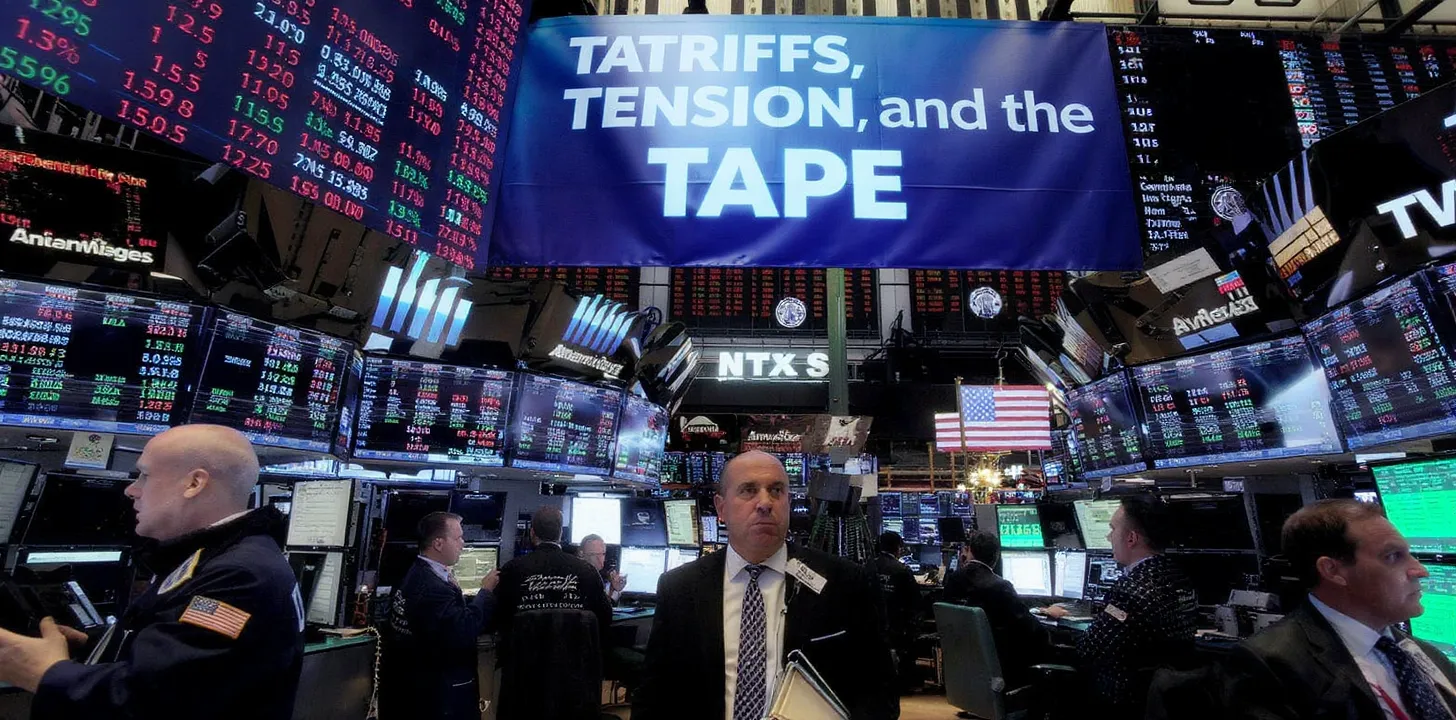Trade War Flares Up as Markets Brace for U.S. Jobs Data, BoE Decision
A fresh wave of tariffs from the United States on Canada, Mexico, and China has triggered market turbulence just as investors turn their focus to this week’s upcoming U.S. jobs report and a key Bank of England (BoE) policy decision. The simultaneous onslaught of geopolitical and monetary policy developments sets the stage for a volatile start to February. This article dissects the main events likely to dominate headlines in the week ahead, assessing their potential impact on currencies, equities, and broader market sentiment.
1. U.S. Tariffs and Potential Retaliation
President Donald Trump’s promise to impose tariffs on Canada, Mexico, and China has materialized, adding another layer of uncertainty to global markets. Canada swiftly retaliated with 25% levies on a range of U.S. imports, while Mexico and China have vowed their own measures. This escalation in trade tensions immediately weighed on risk assets, with global equities dropping and currencies linked to trade-sensitive economies—such as the Canadian dollar (CAD), Mexican peso (MXN), and the offshore Chinese yuan (CNH)—taking the brunt of the selling.
Key Point: Markets will watch closely for any further retaliatory moves, as a deeper trade conflict could lead to higher inflationary pressures in the U.S. (through pricier imports) and hamper global growth.
FX Outlook: The U.S. dollar initially surged on safe-haven flows, but sustained dollar strength is not guaranteed if economic data disappoints or if the Federal Reserve leans dovish in the coming weeks.
2. The U.S. Data Deluge: Jobs, ISM, and Sentiment
Amid trade tensions, investors will sift through a busy U.S. data calendar, capped by the monthly jobs report on Friday. Speeches from top Federal Reserve officials—including Mary Daly, Thomas Barkin, Alberto Musalem, and Austin Goolsbee—will also offer clues about the central bank’s stance.
Jobs Report (Friday): After several months of fluctuating payroll growth, markets anticipate a moderately strong headline number, but any downside surprise could spook risk assets and raise fears of a domestic slowdown. Wage inflation and the unemployment rate will be equally important in shaping expectations for the Fed’s next move.
ISM Manufacturing & Services PMIs: These gauges provide insight into business confidence. Tariffs could weigh on manufacturers if input costs rise significantly.
Factory Orders, Trade Data, Weekly Jobless Claims: Each release can reinforce or undercut the narrative that the U.S. economy remains resilient, even under the weight of trade conflicts.
3. Bank of England: Expected Rate Cut
On Thursday, the BoE is forecast to lower its key Bank Rate by 25 basis points to 4.50%. Analysts point to lingering economic worries, softer inflation prospects, and global uncertainty as the driving factors. The Monetary Policy Report and meeting minutes will be scoured for hints on whether additional cuts are in the pipeline.
Sterling’s Reaction: The pound (GBP) has been under pressure amid risk-off sentiment, and a BoE rate cut could push it lower still—especially if Governor Andrew Bailey signals a more extended easing cycle. However, if the BoE tempers its language on future cuts, sterling might find support.
4. Europe’s Data and ECB Speak
In the Eurozone, final January PMIs, flash HICP (inflation), retail sales, and producer prices top the economic agenda. Additionally, German industrial orders and production data will test the health of Europe’s largest economy. While no major European Central Bank rate decision is scheduled, ECB Chief Economist Philip Lane is set to speak midweek, potentially providing clues on how the bank views the region’s growth outlook.
Euro Impact: The euro (EUR) stumbled against the dollar in early trading this week amid concerns that trade tensions could spill over and weaken European exporters. Any signs of disinflation or faltering industrial activity could further weigh on the currency.
5. Asia-Pacific: Mixed Signals
Japan: Final January PMIs, along with December household spending and wage data, will offer insights into consumer behavior. The Bank of Japan’s latest summary of opinions suggests policymakers remain open to further rate hikes if inflation persists.
China: Markets reopened Wednesday after Lunar New Year, encountering fresh tariff turmoil. Caixin’s manufacturing PMI slipped to 50.1, missing forecasts. With services PMI due Wednesday and CPI/PPI on Sunday, investors will gauge whether China’s economy is cooling more rapidly than expected—especially under trade pressure.
Australia and New Zealand: Australian trade data follow Monday’s retail sales release (which disappointed), while New Zealand posts Q4 employment figures. Both currencies have felt the heat from trade tensions and China’s slowdown.
6. Canada on the Frontlines
Canada is ground zero for the latest round of U.S. tariffs, facing new levies that could hit multiple sectors. Ottawa responded in kind, raising the possibility of a bruising trade conflict. This week’s Canadian data—PMIs, trade figures, and jobs—will be pivotal in judging whether the domestic economy can weather the storm. The Canadian dollar tumbled early in the week, reflecting fears over lost export markets and potential economic fallout.
Conclusion
The confluence of trade tensions, a high-stakes U.S. jobs report, and the BoE’s anticipated rate cut makes this week a perfect storm for volatility. Currency markets are at the epicenter, with the U.S. dollar swinging in response to safe-haven flows and shifting Fed expectations, while the Canadian dollar and Mexican peso stand particularly vulnerable to trade war headlines. Equities are in retreat as the threat of tit-for-tat tariffs dents global growth prospects. Meanwhile, bond yields may rise if investors believe tariffs will stoke inflation, only to potentially reverse if data signals economic weakness.
Ultimately, it’s a week for traders to stay nimble. Any sudden escalation—or de-escalation—in trade rhetoric could spark whipsaw moves, and a surprise in the U.S. jobs data could redefine the narrative on Fed policy. The outcome of the BoE meeting will be critical for sterling, but overshadowed if global sentiment sours further. As the world grapples with these overlapping risks, market participants can expect few dull moments in the days ahead.



